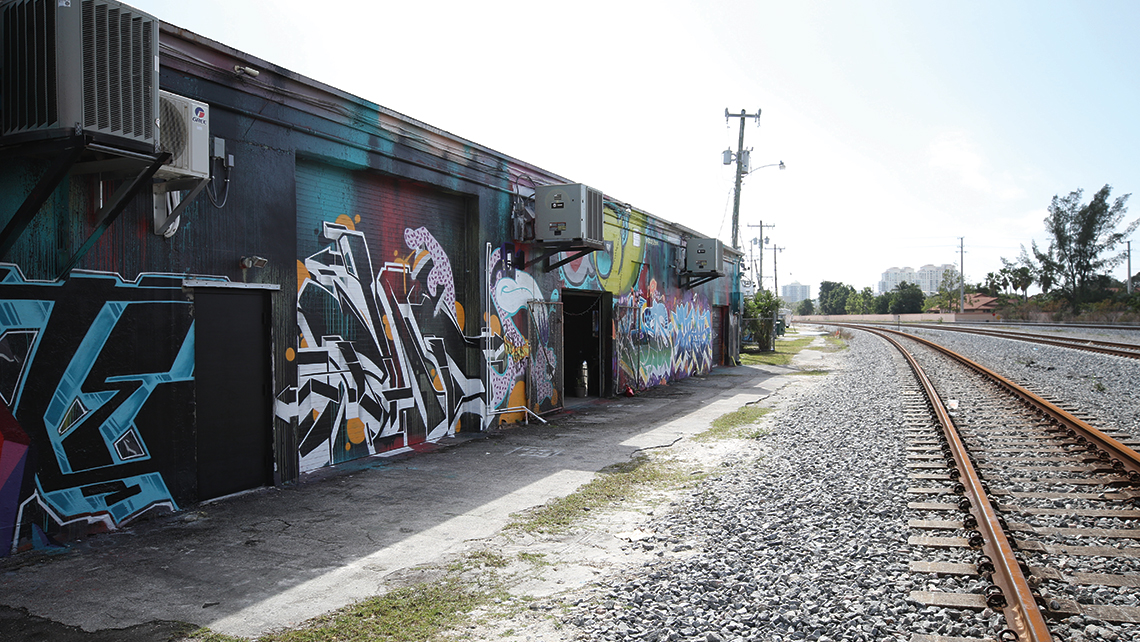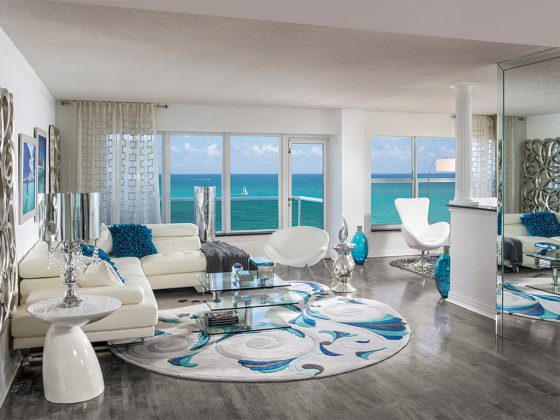It’s been a long day, and coffee just won’t cut it. “I could use a single malt scotch,” Doug McCraw says in the Alabama drawl that’s grown mighty familiar to Fort Lauderdale insiders over the last decade. Three conference calls before lunch will do that to a man. But long doesn’t mean bad, McCraw is quick to clarify. “It’s been a good day—just busy and a bit hectic,” he says. “But that’s not unusual in FAT Village.”
It sure isn’t. “Busy and a bit hectic” might as well be the official motto of FAT Village, the quarter-mile strip of unremarkable warehouses centered around the 500 block of NW First Avenue that McCraw began purchasing in 1998. Today, he pretty much owns the entire street. And what a street it is: more than a dozen artist studios and gallery spaces, a coffee shop, coworking space, a brand new restaurant from one of Fort Lauderdale’s buzziest hospitality groups, lofts, a vintage barbershop, and whatever the heck you want to call C&I Studios all stuffed into a street small enough to traverse with your eyes closed.
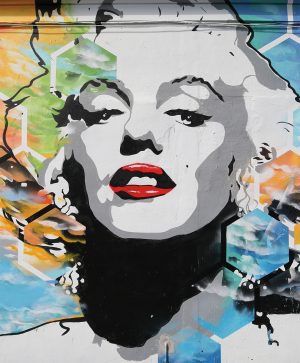
Everything culminates in monthly art walks that draw thousands of curious locals to a part of town people used to avoid. There’s an annual FAT Village music festival, For the Love, that just celebrated its third year. And now there are millions and millions (and millions) of dollars invested in surrounding developments, like the coming 195-room hotel and 168-unit apartment complex.
Oh, and we haven’t even gotten to the larger picture of Flagler Village, the neighborhood housing FAT Village, which is itself blooming at a remarkable pace.
So, yeah—busy and a bit hectic.
“I tend to be tenacious in pursuit of a hunch,” McCraw says. Clearly, in this case, his hunch paid off. But as McCraw’s vision of an arts and technology hub in Fort Lauderdale begins to reach an actualization even he—admittedly a bit of a dreamer—couldn’t have dreamt up, some tougher questions arrive.
Mainly, how to preserve it all? How to protect the warehouses and their artists, the risk takers who introduced this city to new concepts and tastes? How does one ensure that Flagler Village doesn’t fall into the trap so many trendy “arts districts” around the country have found themselves in: Buzz leads to development leads to an exodus of everything and everyone that made the neighborhood worth visiting in the first place.
What is standing in the way of Flagler Village being sucked into a black hole of impossible-to-pay rent and cultural gentrification?
Or—more important—who?
Going Native
Try to conjure up an image of the new, urbane 20-something Lauderdalian, and you could do no better than 29-year-old Jaime Sturgis. Here he is, young and fit, taking a business call while swaying back and forth on an Indo Board in shorts and — the nucleus of any proper Fort Lauderdale outfit — sandals. Coffee is brewing just before noon in the Native Realty office, his command base facing the railroad tracks on Flagler Drive, at the northeastern tip of Flagler Village. He doesn’t have many off days, and it appears he prefers it that way.
The office is in a cozy area behind Searstown that, as of January 2015, has been known as the MASS District, which stands for “Music and Arts South of Sunrise.” Like FAT Village, the MASS District is teeming with trendy new concepts, most less than a year old. There’s the new taxidermy-laden brewery Invasive Species, coffee shop Bean to Brew, and the MVP of MASS, Glitch, a popular video game bar that defected from Himmarshee. All of the above are local, born-in-Fort-Lauderdale projects.
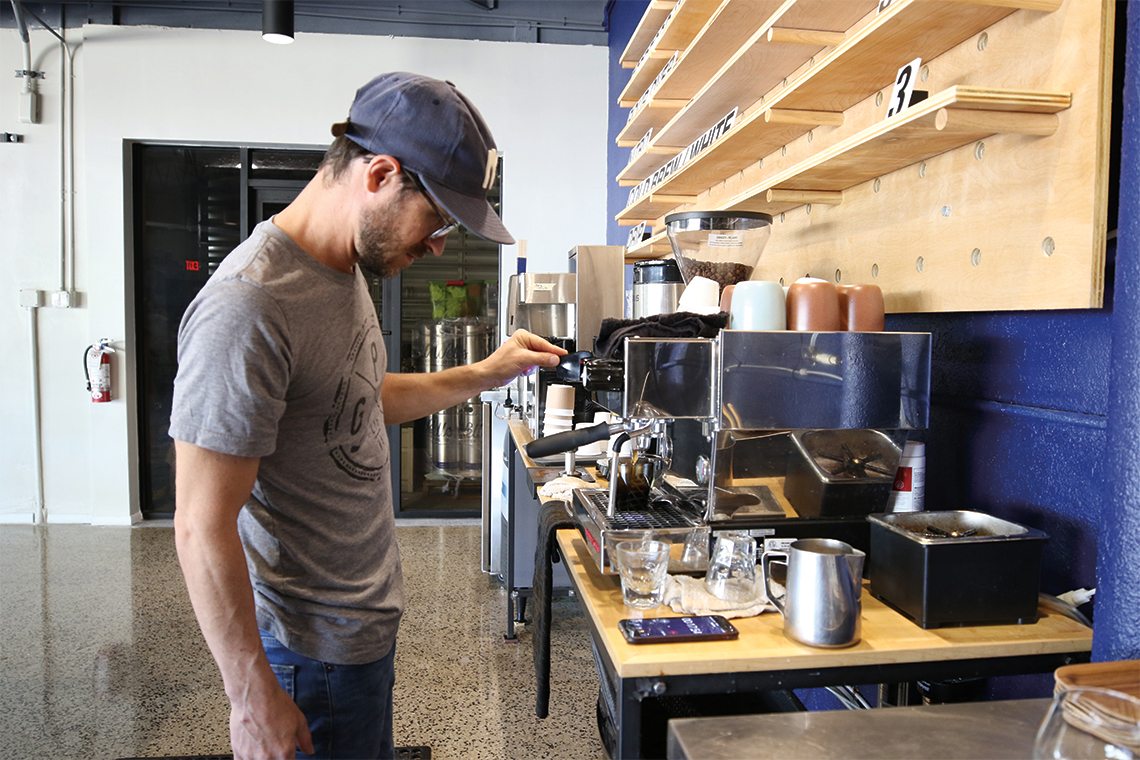
Sturgis himself grew up in Fort Lauderdale, hence the “native” in Native Realty. After graduating from Florida State, he joined the Miami development giants at Metro 1, a real estate group known for charging headfirst into areas like Wynwood and Little Haiti. Sturgis had a front row seat to all that, but decided to strike out on his own after six years. Native Realty opened its doors in April 2017.
Today, Sturgis finds himself in a position – top real estate guy in an up-and-coming arts district – that’d make most developers salivate. But it hasn’t all been easy. “It’s been a trial by fire,” he admits. There have been long hours and a lot of lessons learned. He’s dealt with everything from the mundane — subcontractors — to the unexpected — trying to keep tenants from doing burnouts on their Harleys in the parking lot.
This whole thing is a first not only for Sturgis, but for many of his clients as well. Next door to the Native Realty office, past a few suspicious tire marks, you find Beer Punx. And inside Beer Punx you find Wyatt Lawless, a perfect example of the sort of spunky creativity you get in Flagler Village.
“I just kind of combined my two main interests,” Lawless says, those two interests being punk music and beer. The result is a delightfully odd mashup reflective of its creator, an active duty Coast Guard armory supervisor tattooed from toe to neck (think G.I. Joe meets Henry Rollins) who is, at first glance, wildly intimidating and, upon closer inspection, heartily welcoming and kind.
Beer Punx is still in its infant stage. It opened in June 2017 and so far business is good. No professional marketing team was necessary for Lawless. Curious art walkers just sort of started to wander in, which has been a blessing for many MASS District businesses. “It’s been a very local crowd,” Lawless says.
That’s music to Sturgis’ ears. “Rooted in local knowledge,” goes Native Realty’s tagline.

“When we think about trying to curate neighborhoods, I think it’s important not only to understand who the patron is, but also to be the patron,” he says. “I live in Fort Lauderdale. I know what I want to see. I know what my friends want to see. I am the target market. I am a millennial. I think it’s important to be fully immersed in what you’re trying to build so that you have a better understanding of how to do it.”
There is an awful lot of Fort Lauderdale blood running through the MASS District, which is one reason Sturgis thinks the area won’t fall prey to stratospheric rents the way Miami’s arts district, Wynwood, has in the last five years. “If you look at where the money was coming from in Miami—a lot of it was external. You had people coming from South America, Russia, China,” he says. “Here, for the most part, you’re seeing that the majority of the influx is actually domestic… These are people that have lived here, were raised here, and that intend to stay here.”
Mary Ann Cohen knows a thing or two about Wynwood. She operated her gallery, MAC Fine Art, out of the neighborhood for four years before she fled to a cavernous 12,000-square-foot space in the MASS District in 2013. She doesn’t totally buy the comparisons between the two neighborhoods.
“I think what we need to be more concerned about is not being Wynwood, but being knocked down and condos coming here,” she says. “That’s ultimately what happens to properties around here. People sell them, they get leveled, and they make condos.”
Cohen says the concentration of strong commercial businesses in the district has certainly slowed that process. “That’s kind of how I sold my landlord on this. I said, ‘You have no idea what having a creative community can do to your value.’”
But the tenants are starting to get some idea.
“I can see how, in the future, it might be tough for people like us to do stuff here again,” Lawless says. “We’re already at $35 per square foot. It’s not like we’re making out on warehouse pricing. We’re paying downtown prices.”
So is he still stoked on the MASS District? “Super stoked,” in fact, even though he knows his future is uncertain. “It’s a dream come true. It’s hard freaking work. I do 100-hour weeks sometimes. But I get to sell my beer. I get to play my music.
“It’s not a total money grab. There are genuine intentions too.”
Keeping the Art in Arts Districts
Things were not always this pretty.
Jim Hammond remembers a night, around 2009, when he heard a knock on the door of his FAT Village warehouse.
“There was a homeless person who I’d given bottles of water to before and I could tell he was definitely out of sorts.”
So Jim said, sorry, man, but not tonight.
“And he pushed me over and bit me.”
There are plenty of stories like that about the early days of FAT Village. Crime, prostitution and NSFW-photoshoots by the railroad tracks. These are scenes hard to imagine when driving down NW First Avenue today, past sleek art galleries, stylish millennials and even a brand-spanking-new restaurant, Henry’s Sandwich Station (formerly known as Proper Sandwich), from the kings of Himmarshee, J.E.Y. Hospitality Group.
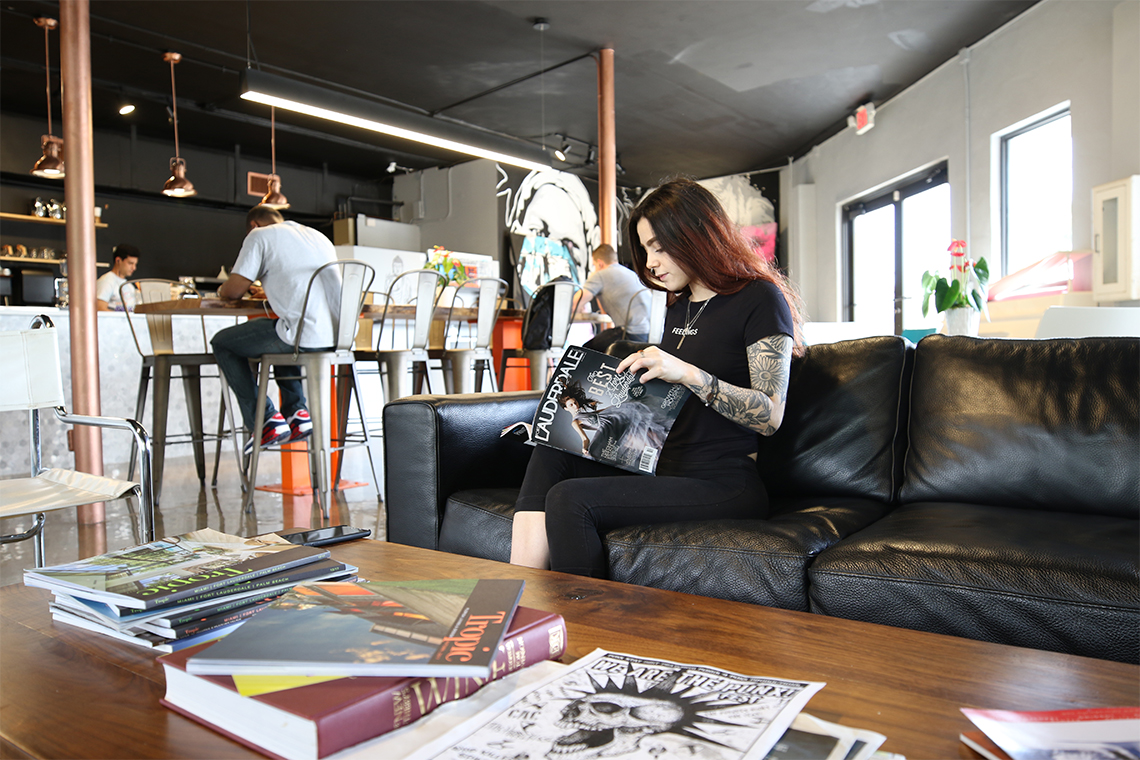
“I kind of want to pioneer that area like we did on Himmarshee,” says Marc Falsetto, co-founder of J.E.Y. His concepts — which include ROK:BRGR, Public House, Apothecary 330, and more — indeed helped turn Himmarshee around. Before Falsetto and company came, the boozy chunk of downtown was ripe with muscle bros gulping down glowing liquors poured from shot girls stomping around on bars. There were fights and good ol’ fashioned South Florida debauchery. You’ll still find patches of that if you look in the wrong place, but the post-J.E.Y. Himmarshee is much more friendly to the young professionals currently flooding this city, the ones challenging old tastes, demanding less Bud Light and more blueberry-infused bourbon. They are the ones in the driver seat of Fort Lauderdale’s cultural future, and Falsetto hopes to introduce more of them to Flagler Village.
Henry’s Sandwich Station is the first real restaurant to move into the area. Falsetto’s next project will be a live music and event space in the MASS District, which he can’t discuss in detail yet. He sees a time in the not-so-distant future when Flagler Village will no longer be seen as a place you go to from the downtown entertainment districts.
“I think what’s going to happen is Flagler Village is going to be a complete extension of downtown,” Falsetto says. “Within five years, there’ll be no pockets.”
Dylan Lagi, the executive director of the MASS District, which isn’t just a name but an actual nonprofit organization with paying members, knows growth is on the horizon. “In five years, I think we’re going to see a lot of Flagler and MASS get built out,” he says. “We’re going to have to go west of the tracks because there’s more warehouses there. There’s a whole industrial area that we consider to be the next area to repurpose.”
Lagi hopes things will stay local but he knows it’s a tricky science with no clean solution. His own development, a warehouse space called The Great Project, is a hopeful indicator that, perhaps, artists can still have a place in the neighborhood they helped create. Lagi uses the 60,000-square-foot warehouse to rent out ten artist studios to local creatives. He rents the property from a Fort Lauderdale family who has owned it for generations.
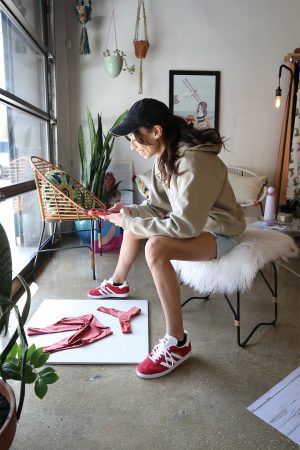
“When things come to us, we always want to look through it with the lens of: How does it impact our local community here?” Lagi says. “We don’t want all the work that’s done with the local groups to get overshadowed by some other group that doesn’t even know how to pronounce a street name here.”
Jim Hammond eventually moved out of FAT Village because he needed a bigger space to make the puppets for his now-massive Fort Lauderdale Day of the Dead celebration. He never stopped watching the district grow, though. And he looks on today proud but cautious. His concern is more long-term.
He’ll remind you that, in the ’80s and ’90s, it was artists who rescued Miami Beach’s Lincoln Road, breathing exciting new life into the pedestrian strip. And he’ll remind you that, today, there are two Starbucks, a Victoria’s Secret, and almost nothing left of that early artistic spirit.
“Every artist going into a new space knows that there will be a moment when you probably can’t afford that space anymore,” Hammond says. “My plea for the developers, as they are pulling together their properties, is to have street-level performance spaces for artists and creatives… Folks in Broward County go to Austin and say, ‘What makes Austin cool?’ What makes these places cool is they have independent art spaces that allow creatives to do whatever the heck they want. If we can have a 20,000-square-foot gallery in every single building, that would be incredible.”
Hammond doesn’t really know any of the developers planting flags in Flagler Village now, but he knows Doug McCraw. And he trusts him and his vision.
“I’m optimistic, because I think Doug McCraw really has a way to convince people of the importance of art and the importance of artists.”
So, now that the man’s vision has come to life, what’s next for McCraw and FAT Village?
“Boy, that’s an interesting question,” McCraw says, as if he’s only now given it a thought. Of course, that’s not true. He and his team are thinking a lot about the future. He’s excited for a new streetscape he says will be “like nothing I’ve seen nationally or internationally.” He and his team are looking outside Florida too.
“Beyond FAT Village in Fort Lauderdale, we have on the drawing board FAT2, which will be out of state. And it will be bigger than FAT Village here,” McCraw says, though he won’t disclose where that might be as of now.
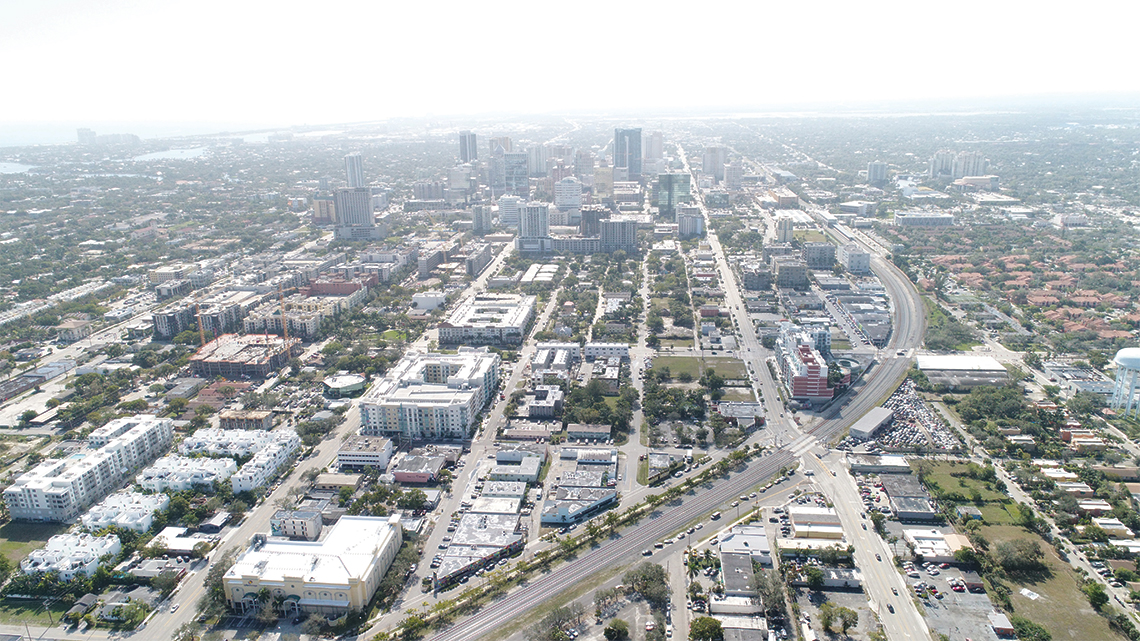
He says he has absolutely no plans to sell his chunk of Flagler Village to any other developer. His exit strategy, he quips, is “a pine box.”
He’s seen the artistic flight that happened in Wynwood and does not wish to share a similar fate. “Our long-term goal is to build a model that is sustainable,” he says. “How do you keep the art in art districts if all of the artists have left? So, there is a very sensitive modeling that has to take place. I think, being here as long as we have, that we’re figuring that out.”
McCraw is an art collector himself, has been for decades. It’s what sparked this whole messy passion project in the first place. His collecting has slowed recently though. Or, rather, evolved slightly.
“My interest in collecting is much less now than it used to be because, to me, creating a space like FAT Village is much more exciting than collecting art.” He pauses for a moment, something he does often in conversation, allowing himself a moment to consider what he’ll say next.
“I guess I get my satiation from the art by living it.”


